How feasible is Boris Johnson's proposed Channel Bridge?

Boris Johnson’s suggestion that Britain and France could be linked by a new Channel bridge is not the first time the Foreign Secretary has indulged in bold, blue-skies thinking when it comes to infrastructure.
As the Mayor of London his backing for a six-runway airport to be built on an artificial island in the River Thames estuary caused the proposal to be dubbed “Boris Island”.
Mr Johnson was also a key proponent of the London garden bridge project, which was originally rejected by his mayoral predecessor Ken Livingstone when first mooted as a tribute to the late Princess Diana.
While neither of those projects has yet come to fruition, the idea of a bridge between the UK and mainland Europe may not be as outlandish as it first sounds.
Ian Firth, senior vice president at the Institution of Structural Engineers, believes in engineering terms, it is a viable project.
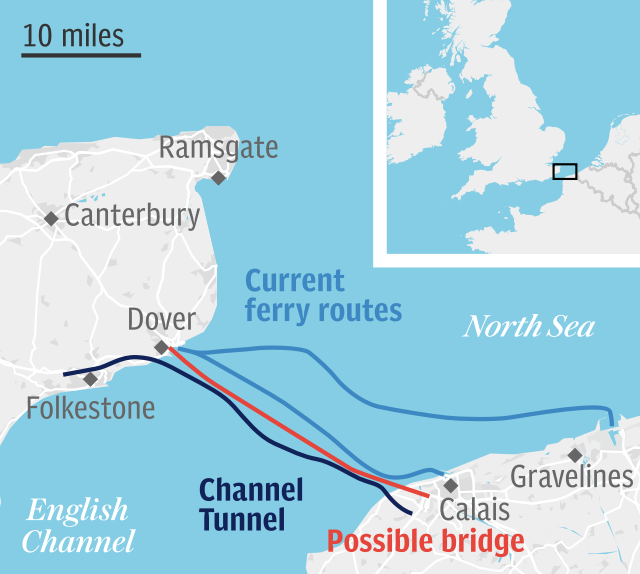
“A bridge across the Channel has been seriously considered before and is entirely feasible,” he told The Telegraph.
“Back in Margaret Thatcher's day, the studies for a Channel crossing included various bridge alternatives as well as the tunnel: the decision for a tunnel would have been made on a variety of socio-political, economic, security and environmental factors, including the technical ones.
“One of the biggest challenges to a bridge is, of course, the shipping collision risk, but modern technologies are making this easier to prevent all the time. There are many long sea crossings around the world, so I don't consider this to be particularly more difficult than those.”
Feasibility
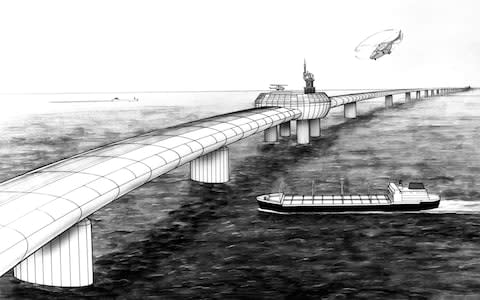
There are a number of potential stumbling blocks which would need to be navigated for the project to succeed, both political and environmental.
Dave Parker, technical editor of New Civil Engineer magazine, says the technology to overcome problems which hampered past proposals for a bridge across the Channel has improved significantly.
“From an engineering point of view it’s not a major challenge,” he explained. “It’s fairly shallow and the bed of the Channel is in fairly good condition.”
One major issue is the volume of shipping traffic in the Channel, with an estimated 400 ships passing through the Dover Strait every day.
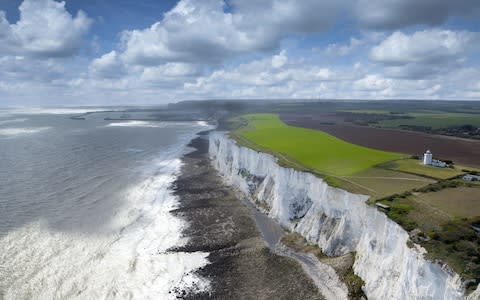
“Traditionally, what stalled earlier proposals for a bridge, has been the density of traffic in the Channel,” adds Mr Parker.
“There has always been doubts about safety, like a supertanker in fog striking a bridge pier, but by the time it is built and open I think most ships will be basically autonomous, run by AI, so the risk of them hitting the bridge would be much lower.”
Inclement weather or high winds wouldn't be an issue either, he argues, citing the current use of wind-deflecting technology on the Second Severn Crossing and the Queensferry Crossing in Scotland.
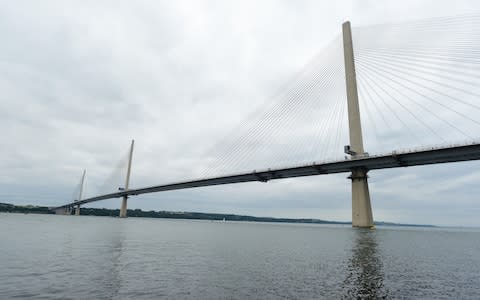
“We’ve got some pretty effective wind shields now for high bridges which reduces the risk of a closure in high winds considerably. I’m sure they could do something similar on a Channel bridge.”
A complex system of ramps could also be installed to prevent UK and European motorists from accidentally driving on the wrong side of the road when crossing the bridge.
Other potential options
A tunnel-bridge hybrid is one solution to the potential shipping lane issue, with traffic being diverted under the Channel Tunnel for a section of the crossing.

“A solution would be a tunnel under the shipping lanes like they have on the Hong Kong–Zhuhai–Macau Bridge,” says Mr Parker.
The bridge, a project linking the autonomous territory to China crossing the Pearl River estuary, features 4.3 miles of underwater tunnels and a number of artificial islands. An estimated 4,000 ships a day will pass over the tunnel section when it’s full operational.
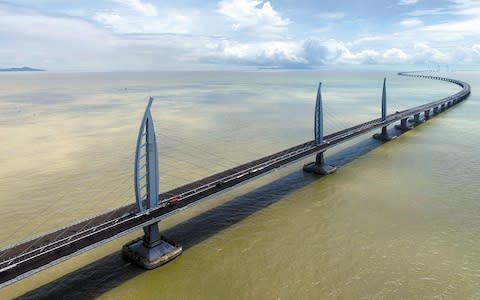
“If you’ve got a designated shipping lane marked out by two islands for example, you wouldn’t need very long-span bridges, but they would probably turn out to be the most economic solution in the long-term,” he adds.
He envisages the Channel structure as a longer version of the Queensferry Crossing, with “high and tall” bridge spans.
The Foreign Secretary has also suggested that a road tunnel under the Channel alongside the existing tunnel could also be an option.
Cost vs economic benefit
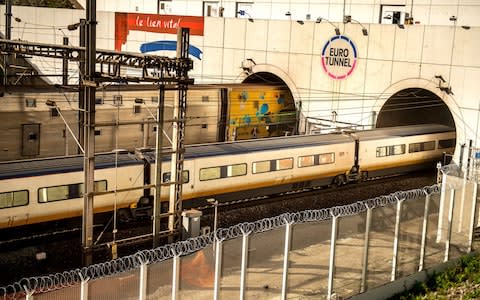
The total cost of the enormous construction project could be upwards of £35 billion, estimates Mr Parker.
He believes it would take around ten years to construct the bridge, but added the planning and feasibility studies “could take longer than building the damn thing”.
“It’s probably the political side and getting the finances together and agreeing who does that will take the time,” he says.
A 2011 House of Lords suggests building the bridge is unlikely to boost trade or tourism between the two nations.
“Capacity within the Channel Tunnel is not a constraint,” it says. “Eurotunnel told us that it allocated pathways between passenger and freight services, and of these less than 50% of the passenger capacity was used, with only about 10% utilisation for freight.”
Impact of Brexit
The implications of Brexit on the freedom of movement could also create “bottlenecks” at the bridge’s entry points, experts have warned.
“The bottlenecks that will arise in the near future are likely to be those created by the customs controls required by Brexit,” explains Dr Peter Holmes, an expert on EU trade policy.
“Much investment will be needed to allow the existing volume of traffic to get through without a massive choke-point.”
Analysts at the UK Trade Policy Observatory (UKTPO) at the University of Sussex, also suggest that the “cost effectiveness of a massive project of this scale can be doubted -see HS2 - especially given the existing ferry and air links”.

“The ease with in which goods and people can be transported across the Channel depends on both hard infrastructure and the policy environment, respectively,” say UKTPO.
“There is little point in having a new bridge at great expense when, post-Brexit, goods and passengers would need to undergo intensive border checks because the UK has by then left the customs union and single market.
“Negotiating trade policies that kept both countries deeply integrated is by far the more effective way than building infrastructure.”
Mr Parker echoes these views, suggesting, “the real challenge now is political, because I can't see it working without freedom of movement”.
“If you've got customs and immigration checks at both ends, you’re going to see queuing and all sorts of delays and that’d make the whole thing slightly pointless.”

 Yahoo News
Yahoo News 
